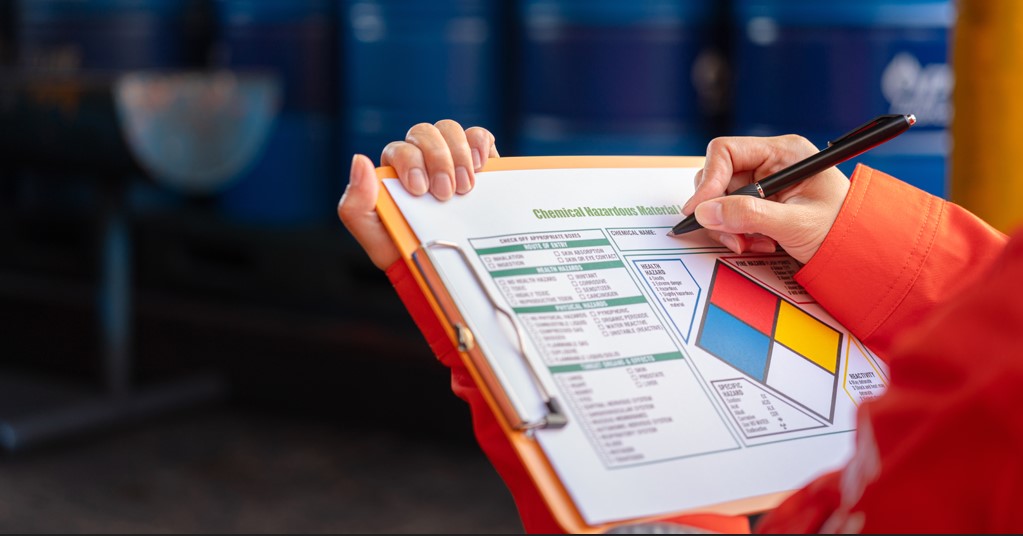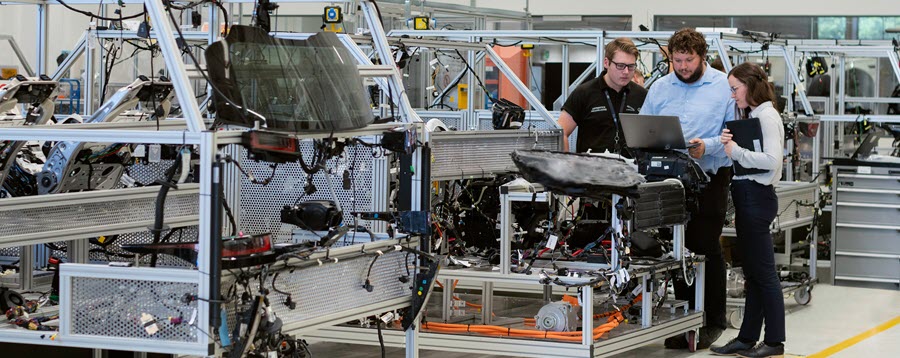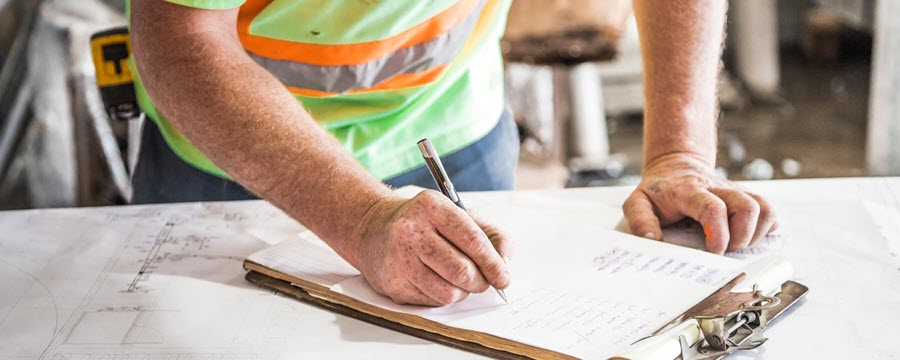
How to Create a Safer Work Environment for Your Workplace

A safe workplace is a productive workplace. According to the US National Institute for Occupational Safety and Health, the cost of illness to businesses is upwards of $170 billion per year. But the loss of staff hours and morale due to bad health or injury is preventable. A successful wellness and safety program will save your company money in the long run. Especially if you make it part of your culture. Since adults spend most of their daily hours at work, it is important to make workplaces as safe – and comfortable – as possible. This article will help you create a safer work environment – no matter where you work.
The Importance of a Safe Workplace
Workplace safety has benefits beyond financial savings. A safe workplace is an asset to both management and employees. The importance of safety in organizational growth cannot be overstated.
Injuries are costly: besides the financial cost of treatment & insurance, there’s lost productive hours for both the company and worker. This is why safety initiatives could be the best gift to your organization. Here’s a glimpse into what safety means for different people within organizations:
| Workers | Employers |
| Prevents loss of life & livelihood | Cost of prevention is far less than the cost of treating injuries |
| Prevents stress on relationships caused by illness or injury | Safety reduces absenteeism and increases team loyalty |
| Prevents out of pocket expenses from injuries outside their insurance plan | Safety creates a spike in the quality of work and productivity |
| Prevents low self-esteem and mental illness like depression from the loss of income or physical ability | Prevents financial downfall from the loss of productivity & reputation |
Safety needs both structural and behavioral changes in the workplace. As a manager, these are steps you can implement to create a safer work environment. Long-term and short-term measures lead toward creating a culture that values safety.
Optimize the Workplace for Safety
Create an environment that is conducive for safety. Start with an assessment of your current space and processes. It will help you identify which of the following tips is relevant to your organization. Structural changes that lead to workplace safety include:
Prioritize Hygiene at the Workplace
The first way to focus on hygiene is to ensure there is regular cleaning. Clean washrooms, workstations and the general office space. When you take care of the work environment, the staff feel that you care about their well-being. If you don’t want to hire permanent cleaning staff, outsourcing is a great solution.
Develop consistent cleaning habits. A clean environment increases employee satisfaction and eventually reduces employee turnover. Create simple cleaning habits including:
- Keeping windows spotless to allow staff to enjoy natural light
- Keeping the trash cans clean and regularly emptied
- Keeping washrooms fresh through regular cleaning
- Improving air quality with scented air fresheners that spray in intervals
- Scheduling regular deep cleaning to remove hidden dirt
Provide adequate toiletries so there’s no excuse for poor hygiene. These include hand sanitizer, tissues, paper towels, etc. Source affordable bathroom and hygiene supplies from trusted vendors who deliver to your location.
Design a Neat and Spacious Workplace
The ease of keeping a space neat depends on its design. Poorly designed workspaces can easily descend into chaos if not optimized for sustained organization. When designing your workspace, be sure to consider everyday use. Preventing workplace hazards is much easier than solving problems once they have occurred. Use the planning phase of workspace design to consider options and make changes. Employers have a responsibility to design conducive workplaces. When discussing design, you can help create a safer work environment by referring to:
● The workplace layout
● Design and layout of equipment and the plant
● The structure and maintenance of different parts of the building
About 1 in 10 employees report that they clean their desks once a month, and a further 9% of workers confess to never cleaning their workspaces. So how do managers keep them clean? By emphasizing the importance of disinfecting.
Regular cleaning reduces dust and prevents cross-contamination with viruses like the flu. Prevent eating at the workstation since food particles get stuck in the furniture. The rotting food can leave unpleasant smells in the air.
To encourage a habit of cleaning desks, place supplies in a convenient place. Hand sanitizers and wipes can kill germs in seconds, so place them in strategic areas like:
● Workstations and printers
● Conference rooms
● At entrances and exits
Strategically Place First Aid Kits
In the case of injury, a first aid kit comes in handy. Make sure you have placed these kits in easily accessible and well-marked locations throughout the office. They are helpful during an accident and can protect you from liability and claims of neglect.
First aid kits provide several advantages to your organization:
- Since employers must provide first aid kits, having them prevents legal liability
- First aid training can help develop team spirit and boost morale
- First aid kits save time and money in the event of injury
- Supplying first aid kits and other safety equipment demonstrates care for the employee. It increases employee satisfaction since they know the company cares about their wellbeing.
- First aid kits act as a subconscious reminder to monitor safety when working
- They reaffirm your company’s commitment to safety
Clearly identified first aid kits act as a subconscious reminder to monitor safety while working.
Install Safety Signage in Relevant Areas
Increase the safety consciousness of your workplace by installing compliant safety signs prominently. Signs are a visual reminder of the collective responsibility staff have in creating a safe work environment. It also increases safety awareness while the staff is doing their daily tasks.
Safety signage has several advantages:
● Reducing liability in case of injury
● Encouraging workers to work safely for themselves and team members, creating a spirit of teamwork and cohesion
● Using simple language that reminds workers of the rules. Signs are great memory tools that help your team grasp safety requirements.
● Saving time and money for organization. Workers are reminded of the safety guidelines at a glance.
Engage Your Employees to Prioritize Safety
Many employees admit to being disengaged from work. You can’t teach discouraged people new tricks, so it’s better to find ways to increase their morale first. As a manager, you can help your team embrace safety as a lifestyle.
Safety signs notify workers of required protective equipment – and help keep safety top-of-mind.
Create Open Communication
Safety policies and programs can be vague on the specific action points that the team needs to tackle. Outline specific tasks for everyone to prevent confusion. Better yet, have the tasks become part of performance evaluation. It encourages your staff to take personal responsibility.
Besides assigning individual responsibilities, listen to feedback on the safety program. Staff will tell you what is working, what needs to change and what problems they have encountered. These steps are important in building open communication channels.
When creating internal communication, add reminders that outline the importance of personal hygiene. These reminders can be memos or posters with the dos and don’ts of workplace hygiene. It’s best practice to have hygiene policies written down in case you need to talk to an employee who is violating them. When you must address a hygiene case, be sensitive and discreet since it’s a personal matter.
Positive Reinforcement and Encouragement
The most effective tool for a manager is to understand and appeal to the psychology of their team. Positive reinforcement is a powerful tool for transformation. It prevents the need to turn nasty when enforcing a new policy and helps you win employee support.
An informed manager is an empowered manager. Business results go hand in hand with employee motivation. This is an important insight to remember as a manager. When you understand worker psychology, you can use tools like positive reinforcement to build a safety culture that works.
Peer to Peer Accountability
To promote discretionary effort, it is important to reward proactive behavior. Discretionary effort is when workers go over and beyond their duties. This is only possible through positive reinforcement. Create an environment that rewards proactive people.
Teach forward-looking accountability where the staff doesn’t use blame in assessing accidents. It teaches them to acknowledge the mistake, identify the changes needed and assign tasks to people. This is a positive and effective way of dealing with workplace incidents.
Positive reinforcement is a powerful tool for transformation
Offer Tools and Training
The successful implementation of a safety program depends on how safety is measured. Don’t measure it through the incident rate. It fails to recognize proactive actions staff and management take to reduce injuries. Set metrics that acknowledge proactive work to encourage the team.
In addition, provide tools and training that equip your team to adopt your safety policy. They may include quality uniforms and changing rooms. Have a process for managing these tools, it will make your life easier and ensure your team always has what it needs. Consider outsourcing the management of safety assets to a trusted vendor.
Managers Create a Safer Work Environment
Don’t make the mistake of letting safety be an afterthought. It should be a part of daily life and if it’s not, it’s your mission to make it happen. Add safety into daily procedures and follow them yourself. Leading by example reiterates your commitment to safety.
After all is said and done, the manager has a critical role in building a safe work environment. It is a team sport and the manager needs to be the head coach in the race to a safe workplace.

